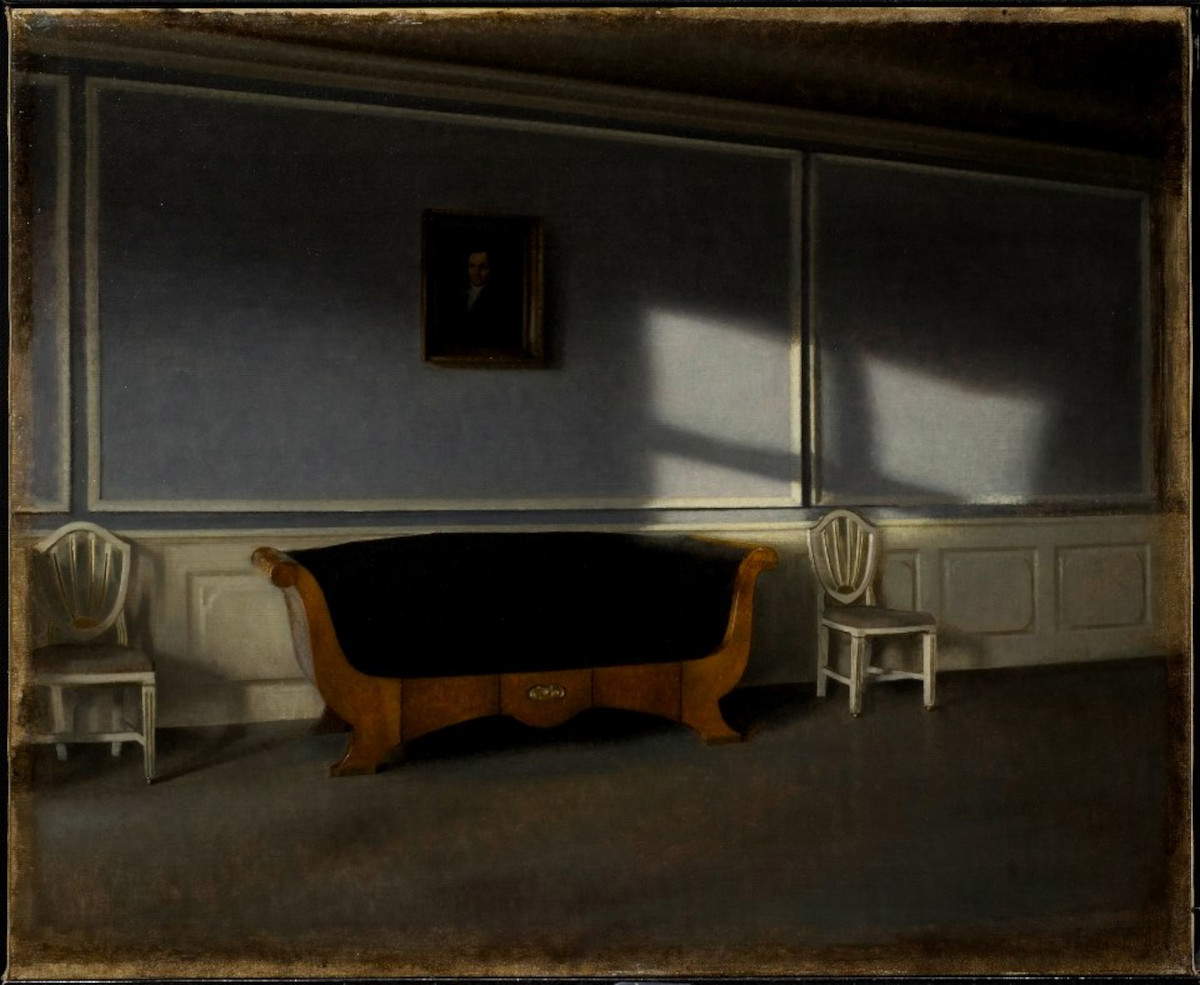From Feb. 22 to June 29, 2025, Palazzo Roverella in Rovigo will host an unprecedented exhibition in Italy dedicated to Vilhelm Hammershøi (Copenhagen, 1864-1916), the leading exponent of 19th-century Danish painting and one of the most highly regarded artists in late 19th- and early 20th-century Europe. Promoted by the Fondazione Cassa di Risparmio di Padova e Rovigo and curated by Paolo Bolpagni, Hammershøi and the Painters of Silence between Northern Europe and Italy, this is the title of the exhibition, represents the first Italian exhibition dedicated to him and, by 2025, also the only one on an international scale. The initiative comes at a time of great rediscovery of the Danish painter, whose fame has grown dramatically in recent years: works once almost forgotten have now reached record-high quotations, while prestigious museums around the world vie to exhibit his work.
The exhibition in Rovigo aims to explore the particular charm and subtle restlessness that pervade Hammershøi’s work. The Danish artist is known for his paintings of domestic environments, seemingly orderly and tranquil, but which actually portend or suspect secret dramas, or the anticipation of impending tragedies, with a claustrophobic sense. His figures, almost always female, are often portrayed from behind. These subjects, seemingly immersed in domestic quiet, actually evoke a sense of isolation, expectation, and tension. His “landscapes of the soul” and deserted city views represent a poetics of silence and solitude, in which the rarefied atmosphere seems to reflect an inner state suspended between serenity and anguish.
In addition to presenting Hammershøi’s masterpieces, the exhibition at Palazzo Roverella will compare them with the works of artists contemporary to Hammershøi from Scandinavia, Italy, France and Belgium, highlighting a sensibility common to Hammershøi’s and shared by other artists: an attraction to silence, solitude andintrospection.
The artist’s life is itself a source of reflection and suggestion. Although he traveled to several European countries, including Italy, England and the Netherlands, Hammershøi always remained a solitary figure, deeply connected to his family, particularly his mother, with whom he maintained an almost symbiotic bond, and to whom he returned close even after his marriage. His wife, Ida Ilsted, who often posed for him as a model, suffered from a serious mental illness, which further accentuates the enigmatic side of the artist’s life and work. His painting, which would later influence the famous filmmaker Carl Theodor Dreyer, was described by some as “neurasthenic,” in that it was capable of evoking a psychological restlessness that transcends the mere subjects depicted.
The exhibition thus promises to be a unique opportunity for Italian audiences to delve into the production and complex personality of Vilhelm Hammershøi, an artist capable of exploring the human soul through images of delicate emotional power.
For info: www.palazzoroverella.com
Image: Vilhelm Hammershøi, Sunshine in the Drawing Room III. Strandgade 30 (1903; Stockholm, Nationalmuseum)
 |
| In 2025 at Rovigo's Palazzo Roverella the first Italian exhibition dedicated to Hammershoi, painter of silence |
Warning: the translation into English of the original Italian article was created using automatic tools. We undertake to review all articles, but we do not guarantee the total absence of inaccuracies in the translation due to the program. You can find the original by clicking on the ITA button. If you find any mistake,please contact us.